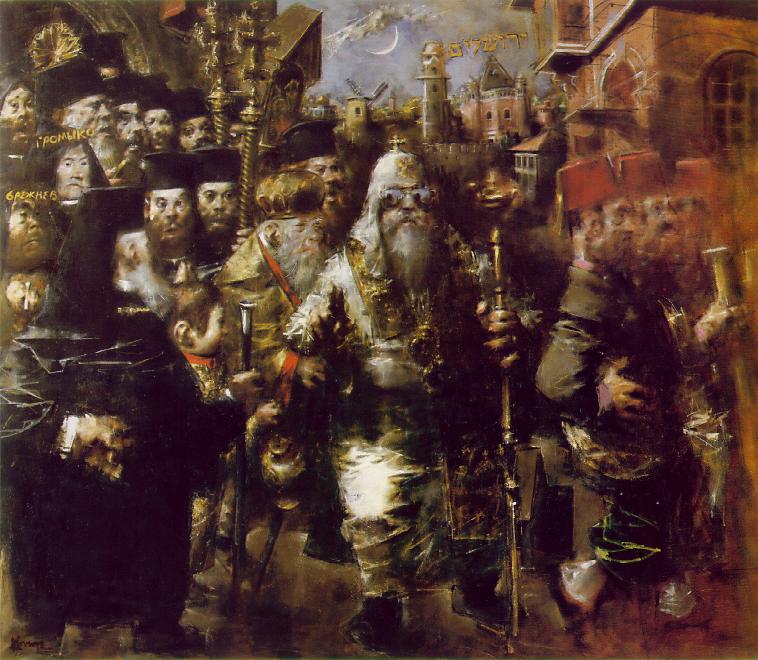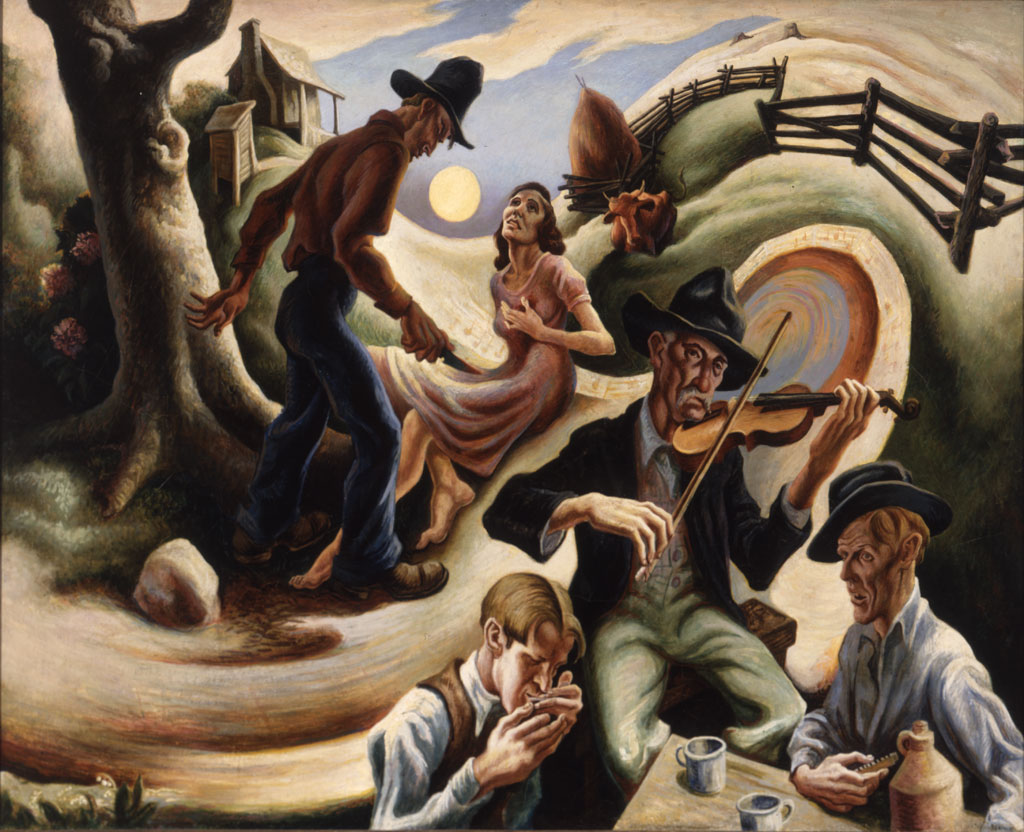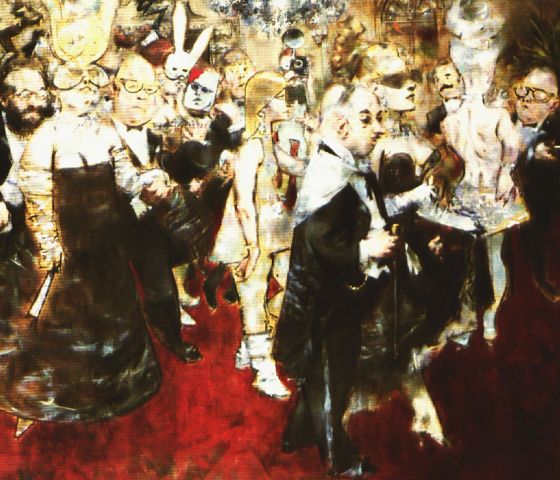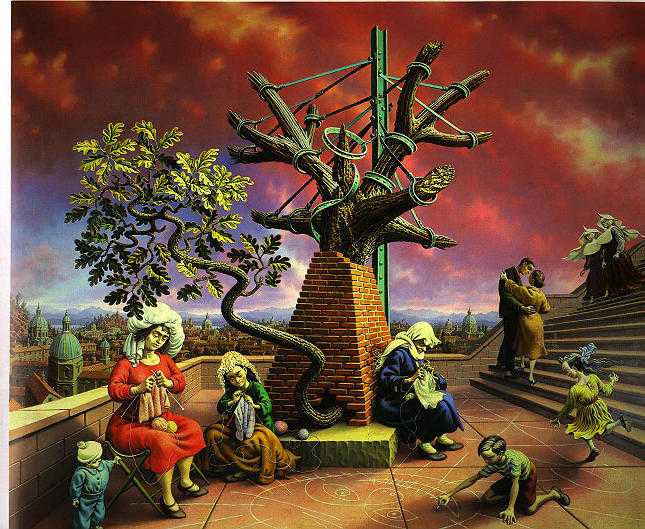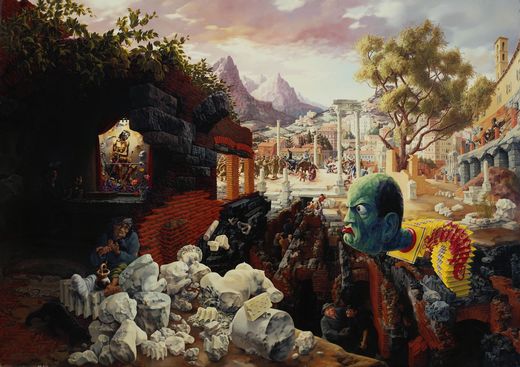ENEMIES IN ARMS
In politics, the revolutionary radical of today regularly becomes the totalitarian Grand Inquisitor of tomorrow. This is no less true in art: institutional and administrative dedication to freedom often produced a rigid conformity.Or as Hannah Arendt once said, ” The most radical revolutionary will become a conservative on the day after the revolution”.
The Museum of Modern Art (MOMA) is for example , probably the most important of the institutions that annually say what is valid art. Historically, such a role should be abhorrent to MOMA’s spirit. Its idea, when it was founded, was to make available art that was being overlooked or suppressed by more academic institutions. Success in this effort led to the establishment of the Modern as a type of reluctant tastemaker, with what often looked like a policy of a new frontier for every new winter season.
The trouble with tastemaking, however reluctant, is that once a taste is made and the ship is set on a course; there is a substantial investment in it; an investment of reputation, of intellectual interest, and of cash. The growth of abstract expressionism as the established ruling order beginning in the mid 1950′s was paralleled by the growth of garish tailfins and excessive chrome on American cars: It was a bit absurd and a non sense, but there was just too much money tied up to them, from the dyes to the advertising mystique of the swollen fender, to risk rocking the boat.
Yet opposition persists. From today’s perspective, it is difficult to fathom the reason for quality artists to be snubbed, though the antipathies ran deep between the more figurative artists like Andrew Wyeth, Jack Levine and Edward Hopper and those who profited through the violent propaganda efforts and proselytizer of American art beginning in the in the 1930′s, of Thomas Hart Benton. Benton( 1889-1975 ) succeeded beyond his wildest dreams, in part by playing on the guilt of previous sins by the museum establishement; the same tastemaking mind set that in former times had failed because they looked at canvases by Renoir, Manet, Van Gogh, Cezanne, Matisse, Picasso and others , and saw what they took to be the work of lunatics or simply incompetents. This collective error, was apparently institutionally resolved, to not be reproduced. The shrill, insistent invective of Benton was pretext; the timely arrival of abstract expressionism gave them a superb opportunity to show their sincerity and expiate past remorse. White smoke billowed from this papal conclave.
Like Moses at the edge of Canaan, Benton himself never quite made it into the Promised Land. That was left to Benton’s star pupil, Jackson Pollock, to cross the Jordan, establish the kingdom, and become the center of a new official art that, as irony would have it, exile Benton to the walls of Presidential libraries in Independence, Missouri, and power stations at Niagara Falls.
A great deal of art history of the past two centuries is the history of officially derided art, which gradually, in the lifetime of its creators or after, has been allowed to come to the surface. By the same token much of the officially approved art of other days is now seen to be pure bombast, falsification and pandering. The French Revolution and Napoleonic Wars, for example, included an immense amount of human suffering and death. But the Salon approved artist of those events, Jacques-Louis David, shows nothing of the appalling social reality; he shows us chiefly ”La Gloire”.
A similar kind of falsification went on in the scenes of happy peasants and workers painted in Europe and widely popular in America before and after the turn of the century. Charles Dickens and Frank Norris have shown us certain prominent aspects of the past century’s industrial Coketown even though these depressing images didn’t exist at all in the official art of the time. There, the lower classes were well fed, deferential to their betters, amusing in their ignorance, happy, and above all else, well mannered and clean.
The role that Salon art played in the past in pandering to suppressed desires is also painfully obvious. All those pneumatic nudes of Bouguereau and Cabanel may have had righteous labels like ”The Christian Martyrs” , but they were the first and foremost, compact and rounded young ladies without any clothes on. In addition, often they were completely at the mercy of some dominant males or males such as a slave dealer, decadent Roman Emperor , the lion in the arena etc.
When Benton began promoting American art there were many in the art intelligentsia who thought there was no such thing, never had been, never would be. If you had really big money, you went in for Italian Renaissance painting and if you wanted to be up to date, you went in for French.
By the early 1960′s, so thoroughly was the atonement been made by the art establishment, that the rebellious avant-garde suddenly found itself with nothing to rebel against and nothing to be in advance of. The drive to be original, to create an entirely different look, failed as part of further reinvention, as was inevitable, for the simple reason that while there are certainly a great many ways to put paint on canvas, the number is finite and the end has been reached. This was quickly recognized by the avant-garde itself; by the Andy Warhols who changed tack. Proclaiming that Pollock killed painting, the younger artists went on to other things such as exhibiting the wreckage of automobiles or empty beer cans cast in bronze. This was transformed into happenings and ”environments” which could not feasibly be contained in a museum.
The means will always vary. The aim is constant, the heart of people to be reached through images one can see and know. Needless to say, the aim is not always achieved by these painters of the human figure or of the world. But in many cases it is. To paraphrase mark Twain, rumors of the death of figurative painting, and painting in genral have been greatly exaggerated, despite the present vast quantity being vomited forth today. Of which almost all will be absolutely valueless within 100 years. Abstraction and figurative are ultimately, despite the acrimony, necessary allies; part of a somewhat reactionary ”cult-of-the-precious-object-in-the-gilt-frame syndrome, which remains the principal foundation of the art game. The debate is part of a larger counterrevolutionary rearguard action by art gamesmen trying to support the art industry’s infrastructure of museums through an education of the masses to appreciate the precious object sort of art. Both groups are, in fact, neo-romantics whose days may be numbered in the digital age.
Whether the larger brush and paint tradition will finally play itself out; siphoned into a black hole with all the drip paintings of imitation Pollocks, squashed motorcars of John Chamberlain, imitation Tinguely’s etc. It does pose the question whether all the exciting fun and bitter debate is a marking of time or a consolidation of earlier discoveries or simple eldorado for pseudo innovators.
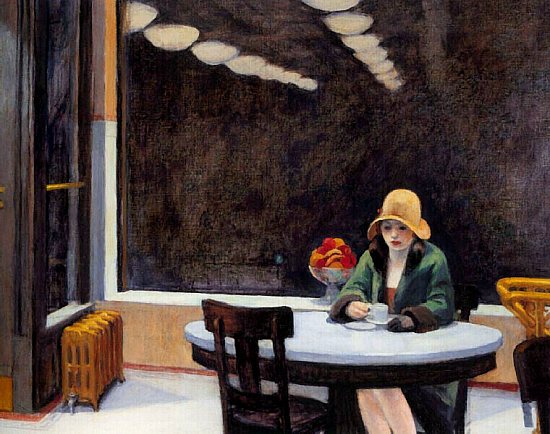
Edward Hopper ( 1898-1980 ) Automat, 1927.''His home and studio were in the heart of the city, and every day, he woke up to an urban scene of desolate streets, rented rooms, cheap hotels, offices, movie theaters, cafes, and gloomy diners. I wonder if he was happy about living in the city, which he portrayed as a murky and unfriendly place where pensive and insecure people lived a lonesome life surrounded by metal and glass.''
Peggy Guggenheim, in ”Confessions of an Art Addict” wrote that art had gone to hell;not permanently, of course. ”One cannot expect every decade to produce genius,…A field must lie fallow now and then. Artists try too hard to be original. That is why we have all this painting that isn’t painting any more” , in referring to conceptual art. This was a curious statement for Guggenheim to have made. The great champion of the avant-garde in the 1940′s became the reactionary of the 1960′s. There is a possibility that in the great technological age in which we are in, art will be at least as different from Guggenheim’s beloved old men; Picasso, Ernst, Miro as theirs was from in their grandfather’s day. Its a question of time, before traditional art museums hold the same interest to the public as museums of paleontology and ethnology.
